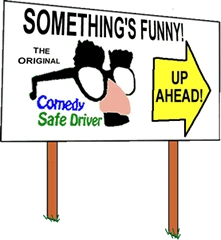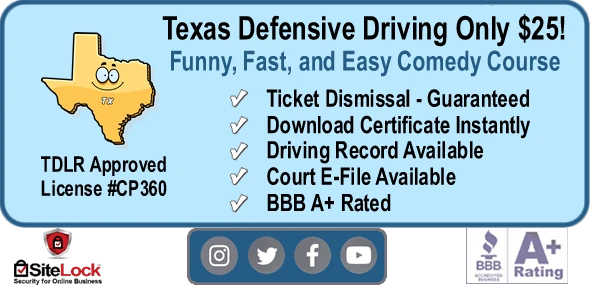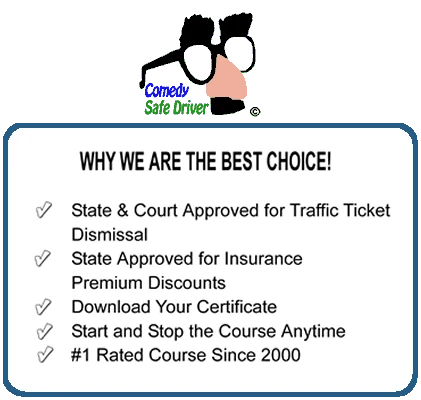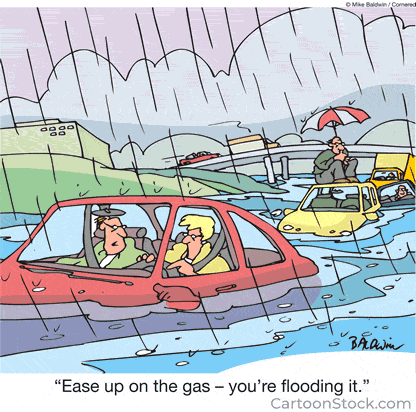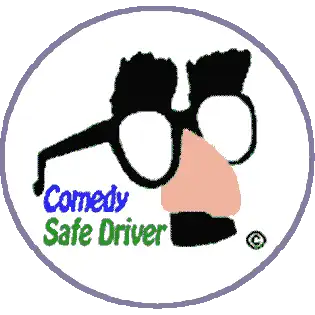Texas Education Agency Approved Defensive Driving Course
Welcome to Comedy Safe Driver, the Texas Department of Licensing and Regulation Approved Defensive Driving Course that combines humor with essential road safety information. Our goal is to educate you on the importance of defensive driving, all while keeping you entertained and engaged. Sign up today and experience a unique approach to learning how to become a safer driver.
Texas Education Agency Approved Defensive Driving Course: Why Choose Comedy Safe Driver?
Our Texas Department of Licensing and Regulation Approved Defensive Driving Course covers crucial topics such as traffic collisions, the dangers of driving under the influence of alcohol, an extensive look at safety equipment, crash prevention techniques, risks of driving, and state traffic laws. We believe that learning should be fun, and our engaging course material ensures that you'll never be bored.
Traffic Collisions
Traffic collisions, also referred to as motor vehicle accidents or car crashes, occur when vehicles collide with each other, pedestrians, animals, or stationary objects such as trees, utility poles, or traffic barriers. These incidents can result in property damage, injuries, and fatalities, as well as emotional and psychological trauma for those involved. The consequences of traffic collisions can be far-reaching, impacting individuals, families, communities, and even the economy.
Our comprehensive course on traffic collisions aims to provide participants with valuable knowledge and skills to minimize the risk of accidents and to respond effectively in emergency situations. The course covers the following topics:
-
Understanding the causes of traffic collisions: This includes exploring factors such as driver error, mechanical failure, road conditions, weather, and other external influences that contribute to accidents.
-
Defensive driving techniques: Participants will learn how to drive defensively, maintain awareness of their surroundings, anticipate potential hazards, and adjust their driving behavior accordingly to prevent collisions.
-
Vehicle maintenance and safety: Proper vehicle maintenance and regular safety checks can help prevent accidents caused by mechanical failures. This module covers essential maintenance tasks, such as tire pressure monitoring, brake inspections, and fluid level checks, along with the importance of choosing and using appropriate safety equipment, like seatbelts and airbags.
-
Road safety rules and regulations: Familiarizing participants with local traffic laws and regulations, including speed limits, right-of-way rules, and traffic signals, helps ensure they are well-prepared to navigate the roads safely and legally.
-
Handling emergency situations: This section teaches participants how to respond in the event of an accident, including steps to take for personal safety, assisting others, securing the scene, and contacting emergency services.
-
Post-collision procedures: Participants will learn the appropriate steps to follow after a collision, including exchanging information with other parties involved, documenting the scene, and reporting the incident to insurance companies and law enforcement.
-
Driver fitness and wellbeing: This module highlights the importance of maintaining good physical and mental health for safe driving, addressing issues such as driver fatigue, the impact of alcohol and drugs, and managing stress and emotions behind the wheel.
Dangers of Driving Under the Influence of Alcohol
Driving under the influence of alcohol, commonly referred to as drunk driving, is a significant contributing factor to traffic collisions, injuries, and fatalities. Alcohol impairs a driver's cognitive and motor skills, leading to poor decision-making, slower reaction times, and a lack of coordination. In our course, we aim to educate participants about the dangers of driving under the influence and provide them with the tools and strategies to avoid engaging in this risky behavior. Key topics covered include:
-
Understanding the effects of alcohol on driving ability: This module explains how alcohol consumption affects the body and the brain, impairing crucial skills necessary for safe driving, such as judgment, concentration, coordination, and reaction time.
-
Legal consequences of drunk driving: Participants will learn about the potential legal ramifications of driving under the influence, including fines, license suspension or revocation, mandatory alcohol education and treatment programs, vehicle impoundment, and even imprisonment.
-
Social and financial consequences: Drunk driving can have far-reaching social and financial consequences, such as damaged relationships, loss of employment, increased insurance premiums, and the cost of legal representation and fines. This section highlights these impacts to help participants understand the true cost of driving under the influence.
-
Identifying the signs of alcohol impairment: Recognizing the signs of alcohol impairment in yourself and others is crucial for preventing drunk driving. This module teaches participants how to identify these signs and offers suggestions for intervening when someone is at risk of driving under the influence.
-
Designated drivers and alternative transportation options: Encouraging the use of designated drivers, who commit to staying sober and providing transportation for those who have been drinking, is an effective strategy for preventing drunk driving. Additionally, this section covers alternative transportation options, such as taxis, rideshare services, and public transportation.
-
Responsible alcohol consumption: Participants will learn strategies for responsible alcohol consumption, including setting personal limits, pacing their drinks, eating food alongside alcohol, and staying hydrated.
-
Bystander intervention: This module teaches participants how to effectively intervene when they suspect someone is attempting to drive under the influence, emphasizing the importance of speaking up, offering alternative transportation solutions, and involving others if necessary.
An Extensive Look at Safety Equipment
Safety equipment in modern vehicles has evolved significantly over the years to improve occupant protection during accidents and even prevent collisions from occurring in the first place. Our course offers an extensive look at the latest safety features and technologies available in contemporary vehicles, helping participants understand their importance and functionality. Key topics covered include:
-
Passive safety features: These are the safety features designed to protect occupants during an accident. Some of the most critical passive safety features include:
a. Seatbelts: We discuss the importance of seatbelts, their proper use, and the various types available, such as three-point belts and adjustable upper belts.
b. Airbags: We explore the different types of airbags available, including front, side, curtain, and knee airbags, and how they provide essential cushioning to protect occupants during a crash.
c. Crumple zones: This section covers the concept of crumple zones, which are strategically designed areas of a vehicle that absorb impact energy during a collision, reducing the force experienced by occupants.
-
Active safety features: Active safety features help drivers avoid accidents or reduce their severity. Some of the key active safety features discussed in the course include:
a. Antilock Braking System (ABS): We explain how ABS works to prevent wheel lock-up and maintain steering control during emergency braking situations.
b. Electronic Stability Control (ESC): We discuss the role of ESC in detecting and correcting skids, reducing the risk of losing control of the vehicle.
c. Traction Control System (TCS): This section covers how TCS works to maintain grip and prevent wheel spin during acceleration, particularly on slippery surfaces.
-
Advanced Driver Assistance Systems (ADAS): These are cutting-edge technologies that provide drivers with additional information and support to enhance safety. Some of the most notable ADAS features include:
a. Adaptive Cruise Control (ACC): We explore how ACC maintains a safe following distance from the vehicle ahead, adjusting the vehicle's speed as necessary.
b. Lane Departure Warning (LDW) and Lane Keep Assist (LKA): We discuss these systems' ability to detect unintentional lane departures and provide warnings or corrective actions to keep the vehicle in its lane.
c. Forward Collision Warning (FCW) and Automatic Emergency Braking (AEB): We examine how these systems use sensors to detect potential collisions and either warn the driver or apply the brakes automatically to mitigate or avoid the impact.
-
Child safety equipment: This module covers the importance of child safety equipment, such as child car seats and booster seats, and provides guidance on proper selection, installation, and usage.
Crash Prevention Techniques
Our Texas Department of Licensing and Regulation (TEA) Approved Defensive Driving Course is designed to teach you essential crash prevention techniques that can help you stay safe while driving. These techniques focus on anticipating potential hazards and adopting a proactive approach to avoid dangerous situations. Key topics covered in the course include:
-
Situational awareness: Developing strong situational awareness involves constantly scanning your surroundings, checking mirrors, and being aware of potential hazards. This module teaches you how to maintain a heightened sense of awareness and make appropriate adjustments to your driving behavior based on road conditions, traffic flow, and other external factors.
-
Following distance: Maintaining a safe following distance allows you enough time and space to react to sudden changes in traffic or unexpected obstacles. We discuss the 3-second rule (or more, depending on conditions) and how to adjust your following distance based on weather, road conditions, and vehicle type.
-
Speed management: This section covers the importance of obeying posted speed limits and adjusting your speed according to factors such as road conditions, visibility, and traffic flow. We also discuss the dangers of speeding and its impact on crash risk.
-
Lane discipline: Proper lane discipline involves selecting the appropriate lane for your driving situation and making safe, timely lane changes when necessary. This module teaches you how to use turn signals, check blind spots, and complete lane changes safely and efficiently.
-
Intersection safety: Intersections are common locations for crashes. We discuss strategies for safely navigating intersections, such as obeying traffic signals, yielding the right-of-way, and using proper turning techniques.
-
Communication: Effective communication with other road users is essential for crash prevention. This section covers the use of turn signals, headlights, and horn, as well as the importance of making eye contact with pedestrians and other drivers.
-
Weather and road conditions: Adverse weather and road conditions can significantly increase the risk of crashes. This module covers driving techniques for various conditions, such as rain, fog, snow, ice, and poorly maintained roads.
-
Distracted driving prevention: Distracted driving is a leading cause of crashes. We discuss the dangers of distractions such as texting, phone calls, eating, and adjusting the radio, and provide strategies for minimizing distractions while driving.
-
Impaired driving awareness: This section covers the dangers of driving under the influence of alcohol or drugs, as well as the risks associated with drowsy driving. We provide tips for recognizing impairment in yourself or others and discuss the importance of choosing alternative transportation options when necessary.
Risks of Driving
Driving comes with inherent risks, but our course will help you understand and manage these risks more effectively. By adopting a defensive driving mindset, you can significantly reduce the likelihood of being involved in an accident.
State's Traffic Laws
Staying up-to-date with the state's traffic laws is essential for every driver. Our course covers the most important laws and regulations you need to know to remain compliant and avoid penalties or fines.
Sign Up for Our Texas Education Agency Approved Defensive Driving Course Today!
With Comedy Safe Driver, learning defensive driving has never been more enjoyable. Sign up for our Texas Department of Licensing and Regulation Approved Defensive Driving Course today and become a safer, more responsible driver. By completing our course, you'll not only gain invaluable skills and knowledge but also have the opportunity to dismiss a traffic ticket, reduce points on your driving record, or qualify for an insurance discount.
Don't wait any longer! Join the thousands of drivers who have already benefited from our entertaining and informative Texas Department of Licensing and Regulation Approved Defensive Driving Course. Register now and start your journey towards becoming a Comedy Safe Driver!
Sign Up Now!Testimonials from Satisfied Students
"I never thought I'd actually enjoy a defensive driving course, but Comedy Safe Driver proved me wrong. The course was engaging, informative, and even made me laugh! I highly recommend it."
"After taking the Comedy Safe Driver course, I feel much more confident and aware of potential hazards on the road. The instructors were knowledgeable and made the material easy to understand. A great experience!"
"I had to take a defensive driving course to dismiss a ticket, and I'm glad I chose Comedy Safe Driver. The course was entertaining and taught me a lot of valuable information. I will definitely recommend it to my friends and family."

